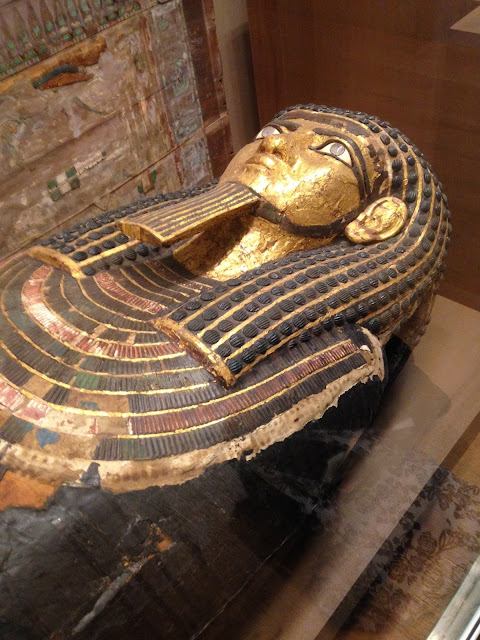Day 409 - The French Academy and Gender
April 4, 2025
Gallery 632 is, on first glance, another odd assemblage of 18th century French paintings of various genres: history paintings, paintings with religious subjects (including one entitled "The Triumph of Mordecai [sic]," which makes me question whether the story of Esther was well known, and if so why), still lifes, animal pictures, and portraits. What theme could possibly bring these works together, I wondered? But actually, the introductory placard succeeds in presenting a unifying theme and proved interesting and instructive. Headlined "Hierarchy, Gender, and the French Academy," it noted that while painters of historical and religious scenes still ranked highest in the judgment of the Academie, consumer tastes were shifting to portraits, scenes of daily life, still lifes, and paintings of animals. Women painters were largely relegated to these "lesser" genres, and until the fall of the French monarchy, only four women were allowed into the Academie at any one time.
Today's work is a small still life, perhaps 24 inches wide and 20 inches high, made in 1780 by Charlotte Eustache Sophie de Fuligny Damas the marquise de Grollier. As an aristocrat, the marquise did not exhibit or sell her works but was associated with a group of well-known artists. This still life shows flowers spilling out of a vase, ripe peaches, green grapes, and a melon (a cantaloupe, perhaps?) that has been cut open, its seeds exposed, all atop a plain wooden table. I like the artful triangular composition of the objects, the true-to-life colors, and the painter's skill in depicting textures, especially evident in the knobby rind of the melon and the cracked edge of the table I read that one of Fuligny Damas' instructors was a Dutch emigre'. Is that what explains the fly on the melon?
later
Looking back at Day 235's entry, I see that the same general points were covered there. Was the introductory wall sign just transferred from one gallery to another?




Comments
Post a Comment